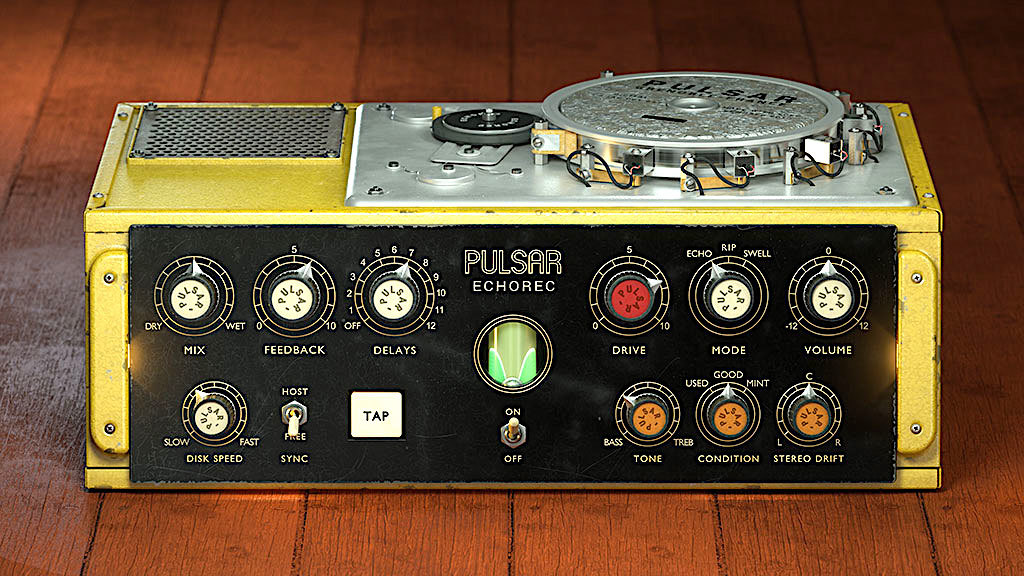- in Production by Bobby Owsinski
New Music Gear Monday: Pulsar Echorec Delay Plugin

I think the first analog delay box that I ever had was a Binson Echorec 2, an Italian machine that was based not on tape but a spinning magnetic disc for its delay sound. It was way advanced for its time, providing multiple echo effects thanks to 4 heads and plenty of advanced parameter settings. It was a unique sounding unit and provided the basis for the sound (along with a pair of Altec A-7s) of all the bands I was in at the time. Unfortunately Binson didn’t survive for long and soon the Echorec was relegated to the sands of history. But Pulsar has brought it back to life in plugin form with some modern twists so that wonderfully unique sound lives on.
As stated above, the Pulsar Echorec in an emulation of the old Binson device, and that means that not only does the user interface look pretty much the same, it even shows the spinning magnetic disc and the “magic eye” tube-style volume indicator from the original unit. It has basically the same features too, but as you’d expect in a modern plugin, much more control as well.
The front panel consists of the Dry/Wet Mix control (the original just had a input level control in its place), a Feedback control, and a Delays selector. This is interesting because it selects from combinations of the 4 delay taps simulating the original 4 heads. Then there’s a Drive control, and a unique Mode control that lets you select between Echo (just the combination of delay taps), RIP (repeats – straight delay with feedback), and Swell, which loops some of the output back into the input (yes, that’s feedback), but in unique head combinations. The top row finishes with an output Volume control on the right.
The bottom row provides a Disk Speed control which sets the delay time. Next to it is a Host/Free Sync switch. When in Host mode, the Disk Speed control syncs to the tempo of your DAW and provides standard note delay combinations. Next to that is a Tap control that lets you tap in the time in the Free Sync mode.
On the bottom right you’ll find the tone color section, starting with a general Tone control, a Condition selector that emulates the state of a magnetic disk from Used, Good and Mint. Finally there’s a unique Stereo Drift control that randomizes the delays slightly from left to right.
This is one cool plugin that will get you close to that David Gilmore guitar sound (he used one on many of Pink Floyd’s iconic records), or be right at home on vocals and keys as well. Plus, since it emulates the tube sound of the original unit, you can even turn the delay off and just use it for some nice tube coloration.
The best part is that the Pulsar Echorec is on sale for a short time for just $49. Like most plugins today, it works on both Mac and PCs and all plugin formats.
Go to the Pulsar website to find out more, or watch the video below.

